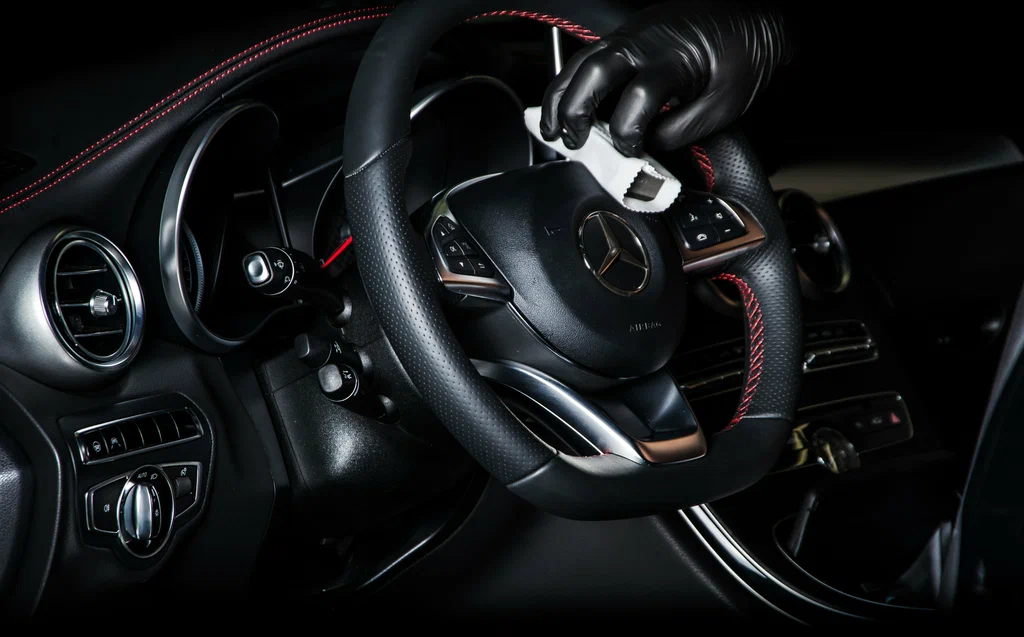The Importance of Full Detail for Your Vehicle’s Longevity
Maintaining the appearance and functionality of your vehicle is crucial to preserving its longevity. While regular washing and cleaning are essential, a full detail goes far beyond basic upkeep. It involves a comprehensive, thorough process that not only restores the aesthetic appeal of the car but also helps maintain its mechanical condition. A full detail encompasses both exterior and interior care, providing multiple benefits that extend the life of your vehicle and ensure it runs smoothly for years to come.
In this article, we will explore what a full detail entails, why it is vital for your car’s longevity, and how investing in it regularly can save you money and effort in the long run.
What Is a Full Detail?
A full detail is an extensive cleaning and restoration process that includes a wide range of services. These services can vary depending on the professional detailer or package chosen, but typically, a full detail will involve both exterior and interior care.
Exterior Detailing:
- Washing and Decontaminating: The first step in exterior detailing is a thorough wash. This includes removing dirt, grime, bird droppings, and other contaminants. It may also involve the use of a clay bar to remove embedded contaminants from the paintwork that regular washing cannot eliminate.
- Polishing and Paint Correction: After cleaning, the vehicle’s paint is assessed for imperfections such as swirl marks, scratches, or oxidation. These imperfections are corrected with polishing compounds and machines to restore the paint’s original luster and clarity.
- Waxing or Sealing: A protective layer is applied to the paint, either in the form of wax or a paint sealant. This protects the paint from environmental contaminants and UV rays, which can cause fading and deterioration.
- Tire and Wheel Cleaning: Wheels and tires are cleaned and treated with specific products to restore their appearance and protect them from brake dust, dirt, and corrosion.
- Window and Trim Detailing: Windows are cleaned inside and out, and any plastic or rubber trim is conditioned to prevent cracking, fading, or discoloration.
Interior Detailing:
- Vacuuming and Dusting: The interior is thoroughly vacuumed to remove dirt, debris, and dust from all carpets, seats, and floor mats. Every nook and cranny is attended to, including under seats, between seat cushions, and in hard-to-reach areas.
- Upholstery and Leather Cleaning: Seats, whether cloth, leather, or vinyl, are deep cleaned using specialized products. Leather seats are conditioned to restore their softness and prevent cracking or fading.
- Dashboard and Console Cleaning: All surfaces, including the dashboard, center console, and door panels, are wiped down and conditioned. This helps prevent cracking and fading from sun exposure and keeps the interior looking fresh.
- Air Freshening: After the detailing process, air fresheners are often applied to leave a clean and pleasant scent inside the car.
Why Full Detailing Is Important for Your Vehicle’s Longevity
Regularly performing a full detail on your vehicle provides multiple advantages that contribute to its longevity. Here are the key reasons why a full detail is essential for maintaining the health and appearance of your car over time:
1. Protection Against Environmental Damage
Your car’s exterior is constantly exposed to a wide range of environmental elements, such as dirt, road salts, tree sap, bird droppings, bugs, acid rain, and UV rays. These factors can cause significant damage to the paint, leading to oxidation, fading, and corrosion if left untreated.
A full detail involves a thorough cleaning and protective waxing or sealing, which creates a barrier that helps prevent these environmental contaminants from directly affecting the paint. Regular detailing reduces the risk of long-term damage to the car’s exterior and preserves its shiny, vibrant appearance. It also prevents contaminants from eating into the clear coat, which can be costly and time-consuming to repair later.
2. Preserving the Vehicle’s Paintwork
The paint is one of the most vulnerable aspects of a car, and maintaining it is crucial for both appearance and value. Over time, dirt and contaminants can create swirl marks and scratches that degrade the surface of the paint. Left unchecked, these imperfections can result in oxidation and rust.
During a full detail, the car undergoes paint correction, which involves removing these imperfections and restoring the paint to its original state. A layer of wax or sealant is applied afterward, creating a protective layer that helps maintain the integrity of the paint. By regularly detailing your car, you preserve its exterior and prevent long-term paint damage, which can be expensive to fix.
3. Preventing the Build-Up of Dirt and Contaminants
Regular detailing helps keep your vehicle’s surfaces clean by removing dirt, grease, and other contaminants that may otherwise accumulate over time. Interior detailing ensures that dust, debris, and pet dander are removed from the seats, carpets, and air vents, preventing allergens from building up.
On the exterior, contaminants like tar, sap, and bird droppings are removed before they can embed into the paint and cause damage. If left untreated, these contaminants can lead to permanent staining or degradation of the clear coat. Regular detailing helps maintain a pristine and clean environment inside and out, ensuring your vehicle stays in top condition.
4. Maintaining the Interior Condition
The interior of your vehicle is just as important as the exterior when it comes to longevity. Over time, the upholstery, dashboard, and other interior components can suffer from wear and tear due to dirt, dust, UV rays, and everyday use. Leather seats, for example, can crack and fade, while fabric upholstery can stain and deteriorate.
During a full detail, the interior is deep cleaned, which helps remove dirt and debris that could damage upholstery and other surfaces. Leather is conditioned to keep it supple and prevent cracking, while fabric seats are treated to remove stains and maintain their fresh look. By keeping the interior well-maintained, you preserve the car’s value and prevent the need for costly repairs or replacements of damaged parts.
5. Improved Resale Value
If you plan to sell or trade your car in the future, a well-maintained vehicle will fetch a higher resale value. A car that has been regularly detailed will look newer, cleaner, and more appealing to potential buyers. Paintwork that is shiny and free of scratches, an interior that smells fresh, and upholstery that is free from stains will give the impression that the car has been cared for, making it more attractive to buyers.
Conversely, a car that looks worn and neglected may lead to buyers questioning how well the car has been maintained mechanically. Investing in regular detailing is one of the easiest ways to protect the value of your car and ensure that it holds its worth over time.
6. Improved Safety
A full detail can also improve your safety on the road. For example, a thorough cleaning of the windows and mirrors ensures that your visibility is clear, which is essential for safe driving. Dirt, grime, and streaks on windows can impair your view and increase the risk of accidents. Similarly, keeping the headlights and taillights clean improves their effectiveness, especially at night or during bad weather.
By maintaining the cleanliness of your car’s exterior and interior, you improve both the vehicle’s performance and your safety on the road.
7. Protecting the Underbody
An often-overlooked part of vehicle maintenance is the underbody. The undercarriage of a car is subjected to road salts, dirt, and debris, which can cause corrosion and rust over time. A full detail often includes cleaning the underbody, especially during seasonal changes, to remove salt and other corrosive materials that can damage the frame, exhaust system, and suspension.
8. Improved Driving Experience
A clean and well-maintained vehicle provides a better driving experience overall. When the interior is free from clutter and dirt, it feels more comfortable and inviting. Clean windows, mirrors, and exterior surfaces provide better visibility, and a car that has been regularly detailed is less likely to have unpleasant odors or distracting grime in the cabin.
How Often Should You Detail Your Vehicle?
The frequency with which you should detail your vehicle depends on several factors, including how often you drive, the conditions in which you drive, and whether your vehicle is exposed to harsh elements. In general, it’s recommended to get a full detail every 4 to 6 months to maintain the longevity and appearance of the vehicle. However, if you live in an area with harsh weather conditions (e.g., snow, salt, rain) or if your car is frequently exposed to dirt and grime, more frequent detailing may be necessary.
Conclusion
A full detail is a comprehensive and effective way to maintain the health and appearance of your vehicle, ensuring its longevity. Not only does it help protect the paint from environmental damage and preserve the interior’s condition, but it also contributes to the overall driving experience, safety, and resale value. By investing in regular full detailing, you are not just keeping your car looking great – you’re also preserving its functionality, protecting your investment, and extending its lifespan. A little attention to detail now can save you significant time, money, and stress in the future.


